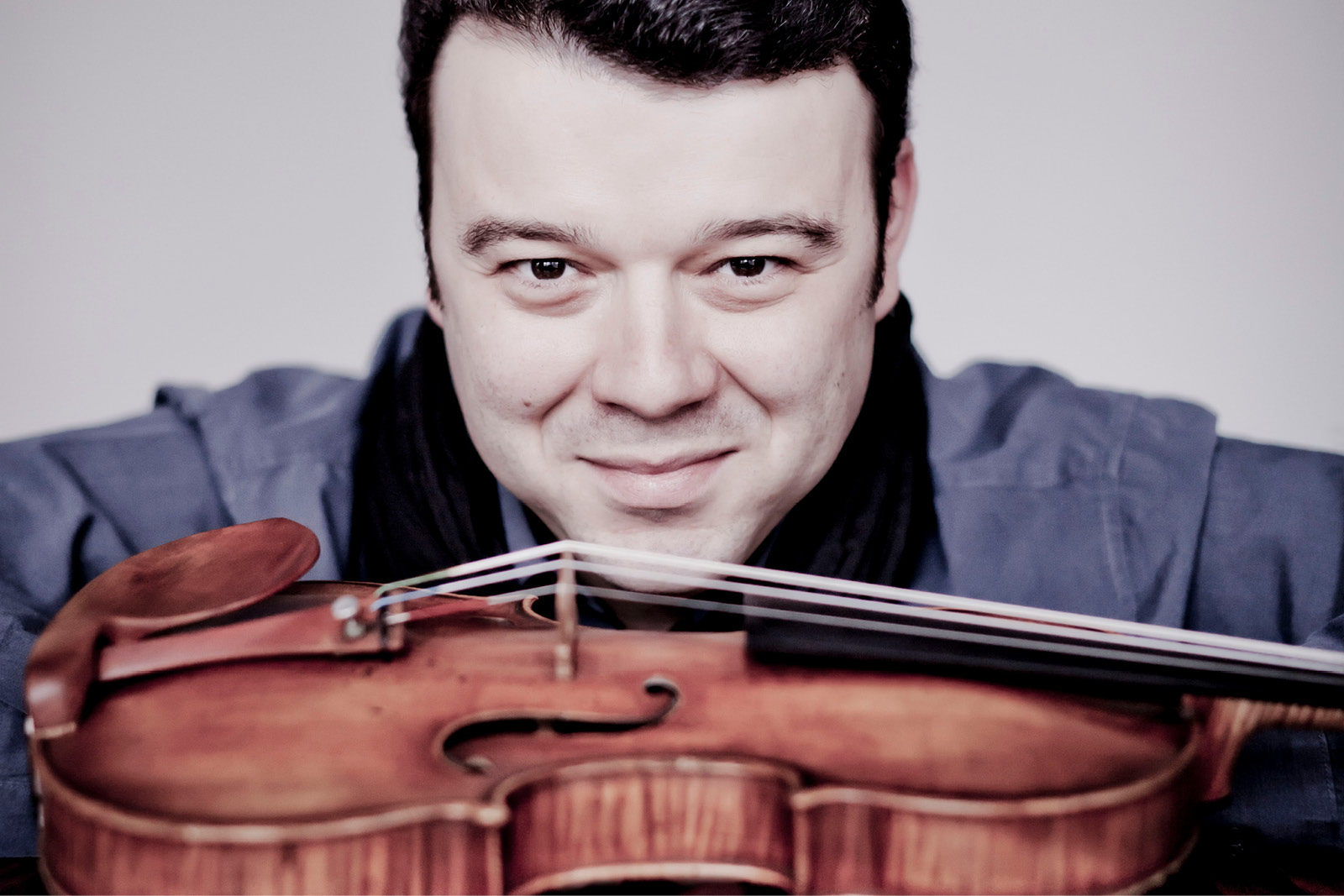After wowing Melbourne with a thoughtfully planned and beautifully executed recital in association with pianist, Daniel de Borah, Ukrainian-born Israeli violinist, Vadim Gluzman continues his Australian tour with perforamances of Tchaikovsky’s perennially popular Violin Concerto. Apart from Gluzman’s fine artistry, what makes these performances so interesting is the instrument he plays. Dating from 1690, the “ex-Leopold Auer” Stradivarius once belonged to Tchaikovsky’s good friend, the violinist Leopold Auer to whom the composer dedicated his concerto. Sadly, Auer considered the work too difficult and never played it on his instrument.
 Vadim Gluzman. Photograph © Marco Borggreve
Vadim Gluzman. Photograph © Marco Borggreve
How fortunate, though, we are to savour its very distinctive tone. Utterly clear throughout its entire range, this Strad has a rich lyrical dimension particularly in its middle register and then an overall silvery quality that imparts a certain backlit aura to the sound.
Gluzman delivered the concerto with utter assurance, working well with Czech maestro, Jakub Hrůša to develop long-breathed phrases that ensured a perfect blend of technical bravura and romantic lyricism. Hrůša connected well with the orchestra to achieve a tightly knit ensemble (no easy feat in this work), judiciously knowing when and when not to intervene.
There was also admirable rhythmic flexibility throughout. The first movement cadenza had a good dash of playfulness and the longueurs of the central Canzonetta were carefully moulded. Amidst the hurly burly of the finale soloist and conductor adopted a mild swagger, without resorting to the imperial grandeur favoured by some interpreters.
The orchestra impressed with its responsiveness, although at times the brass were a little too present, partly due to their raised position and the idiosyncrasies of the Hamer Hall acoustic. Tempi were lively, resulting in exuberant conclusions to the first and third movements. Melbourne has been treated to some fine performances of the Tchaikovsky in recent years, but Gluzman’s will live in the memory.
Dvořák’s rarely performed symphonic poem, The Wood Dove opened proceedings, providing a sombre prelude to the sprightly concerto. Cast in five sections, this 20-minute score interprets a Czech legend of murder and marital betrayal. While not the greatest advertisement for musical cohesion in the composer’s oeuvre, it does contain some interesting orchestral effects. Various wind cameos and offstage trumpets were elegantly presented and the final low horn notes were wonderfully atmospheric. The closing pages of this late work are imbued with harmonic ideas similar to those of Dvořák’s ninth symphony.
At the other end of the program came Ravel’s famous orchestration of Mussorgsky’s Pictures at an Exhibition. Hrůša and the orchestra brought a great deal of vibrant energy to this familiar score. From the initial Promenade the music had an engrossing vitality. The scurrying of Gnome had controlled menace. Justin Kenealy’s alto saxophone solo in The Old Castle was perfectly judged. The faster movements (Tuileries, Ballet on the Unhatched Chickens, Limoges Market) were dispatched with excellent lightness of touch.
Bydlo depicted some rather fast moving oxen, but there was plenty of gravitas, as expected, in “Samuel” Goldenburg and Schmuÿle, and Catacombs. Baba Yaga’s wild ride was a tad measured but led into a resplendent account of The Great Gate of Kiev that brought the concert to a satisfying close.
Hrůša’s genuine appreciation of the orchestra’s efforts and his easy rapport with the players makes me wonder that should an enterprising bookie run a book on Sir Andrew Davis’s replacement, what sort of odds would be offered on Hrůša getting the gig. His youth, energy and the clarity of his musical results would certainly make him a contender for the job.
The Melbourne Symphony Orchestra performs the concert again tonight at Hamer Hall, Arts Centre Melbourne











Comments
Log in to join the conversation.